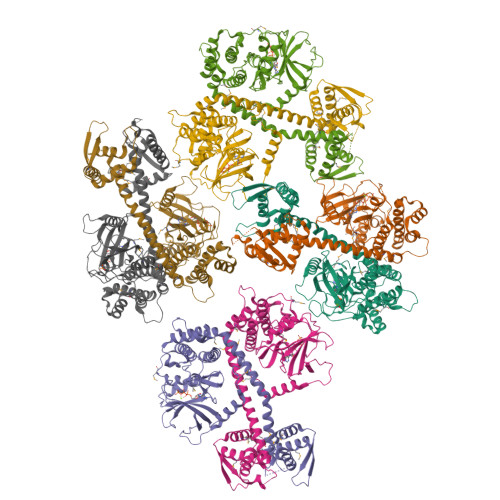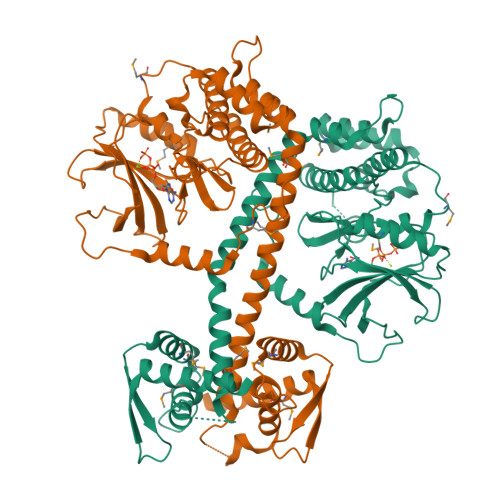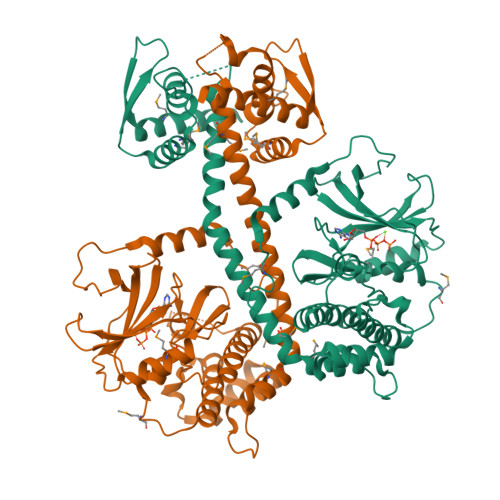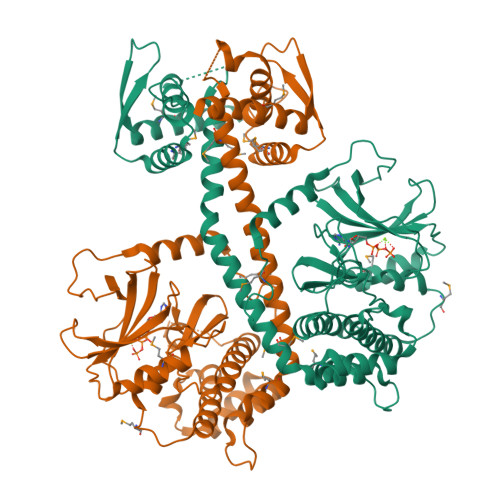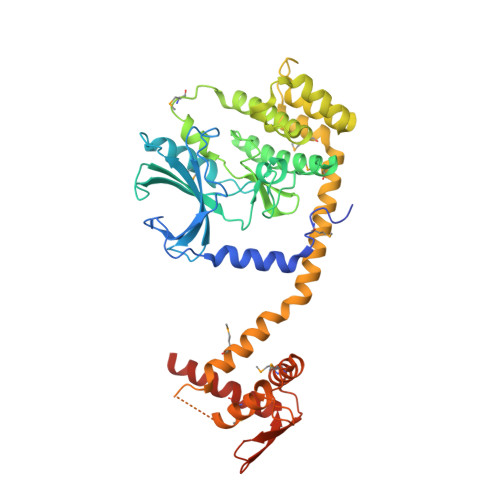Structural Basis for Pan3 Binding to Pan2 and its Function in Mrna Recruitment and Deadenylation
Wolf, J., Valkov, E., Allen, M.D., Meineke, B., Gordiyenko, Y., Mclaughlin, S.H., Olsen, T.M., Robinson, C.V., Bycroft, M., Stewart, M., Passmore, L.A.(2014) EMBO J 33: 1514
- PubMed: 24872509
- DOI: https://doi.org/10.15252/embj.201488373
- Primary Citation of Related Structures:
4CYI, 4CYJ, 4CYK - PubMed Abstract:
The conserved eukaryotic Pan2-Pan3 deadenylation complex shortens cytoplasmic mRNA 3' polyA tails to regulate mRNA stability. Although the exonuclease activity resides in Pan2, efficient deadenylation requires Pan3. The mechanistic role of Pan3 is unclear. Here, we show that Pan3 binds RNA directly both through its pseudokinase/C-terminal domain and via an N-terminal zinc finger that binds polyA RNA specifically. In contrast, isolated Pan2 is unable to bind RNA. Pan3 binds to the region of Pan2 that links its N-terminal WD40 domain to the C-terminal part that contains the exonuclease, with a 2:1 stoichiometry. The crystal structure of the Pan2 linker region bound to a Pan3 homodimer shows how the unusual structural asymmetry of the Pan3 dimer is used to form an extensive high-affinity interaction. This binding allows Pan3 to supply Pan2 with substrate polyA RNA, facilitating efficient mRNA deadenylation by the intact Pan2-Pan3 complex.
Organizational Affiliation:
Medical Research Council (MRC) Laboratory of Molecular Biology, Cambridge, UK.








